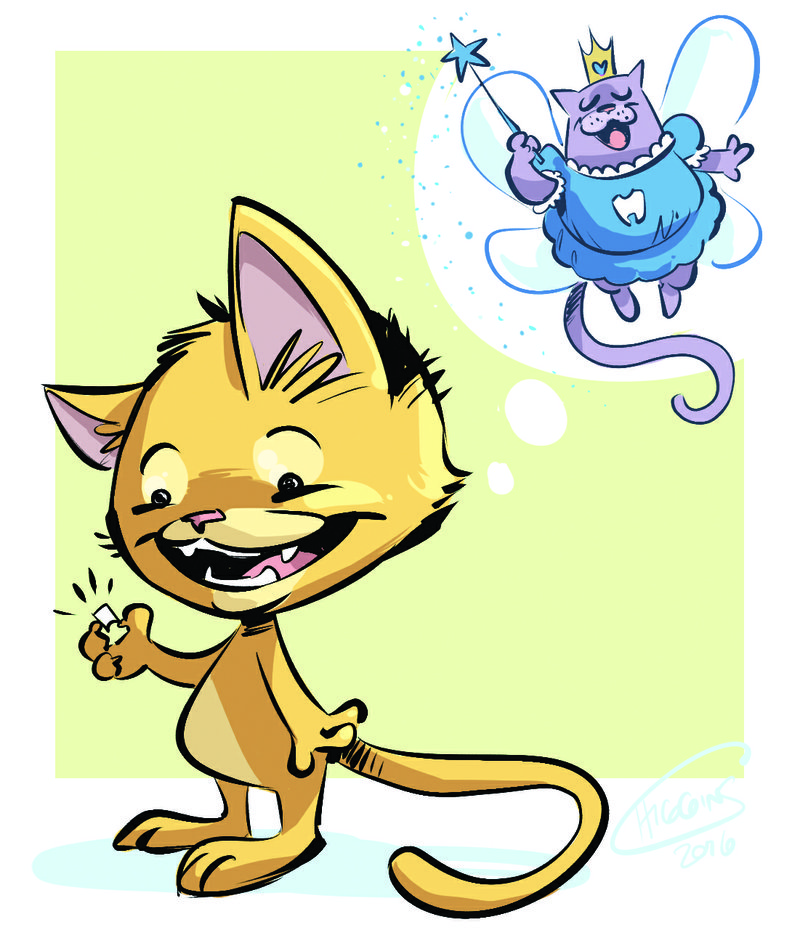My kitten is nearly 3 months old and still has baby teeth. When will she start getting adult teeth? What happens to the baby teeth then?
Kittens begin losing their baby teeth -- also known as milk or deciduous teeth -- sometime in their third or fourth month, according to the Cat Owner's Home Veterinary Handbook. They're born toothless but develop a full set of baby teeth by the time they're 6 weeks old.
The baby teeth, which are tiny and needle-sharp, begin appearing at 2 to 3 weeks of age. The first to arrive are the incisors, followed by the canine teeth at 3 to 4 weeks and the premolars at 3 to 6 weeks. Veterinarians can follow the progression of tooth development to determine a kitten's approximate age. That comes in handy for people adopting a rescued kitten of unknown age.
The average adult cat should have 30 permanent teeth while a kitten typically has only 26 because they do not develop molars, which are the large, flat teeth at the back of the mouth.
When a kitten's adult teeth start breaking through the gums, the kitten will begin to lose baby teeth. They're usually swallowed so don't expect to find little teeth in the carpet or elsewhere. Roots of baby teeth are reabsorbed into the gums when permanent teeth replace them, but sometimes the deciduous teeth don't fall out as expected. You'll be able to see this if it happens because the cat will appear to have a double set of teeth. If that's the case, it shouldn't last more than a few days. There's no reason to panic, but the cat owner's handbook recommends keeping an eye on this.
Baby teeth that don't fall out are called "retained" or "persistent" deciduous teeth, according to an article in the January 2017 issue of Catnip, a publication of the Cummings School of Veterinary Medicine at Tufts University in Massachusetts. If it appears a kitten has retained some teeth, he should be examined by a veterinarian. The teeth may need to be pulled, which can be a simple or complicated procedure depending on how much of a tooth's root is present. A vet will likely X-ray the kitten's gums to better assess the situation.
The Cat Owner's Home Veterinary Handbook says if a kitten's teeth develop as expected -- and they usually do -- then the permanent incisors should erupt from the gums at 3 to 4 months. Next to show up are the canines, premolars and molars, which all make their appearance between the fourth and sixth months. A kitten should have its full set of adult teeth by the time it's 7 months old.
You can examine your cat's teeth to see what's there. It's possible to do this alone, but you might want to have someone else hold your cat while you open its mouth. To look at the teeth, grasp each side of the cat's upper lip with your thumb and forefinger, then gently open the lower jaw.
A cat should have three upper and three lower incisors in front, then on each side, one upper and one lower canine (the long pointy teeth), three upper and two lower premolars, and one upper and one lower molar.
Not every cat develops a full set of adult teeth because some are born with missing tooth buds, but that shouldn't cause the cat any health problems.
If your cat ever seems to have trouble chewing or starts avoiding its food, there could be a dental problem such as a gum infection or broken teeth. Problems can be avoided if the cat has a complete dental checkup at the same time it gets its annual wellness exam.
Family on 12/28/2016
